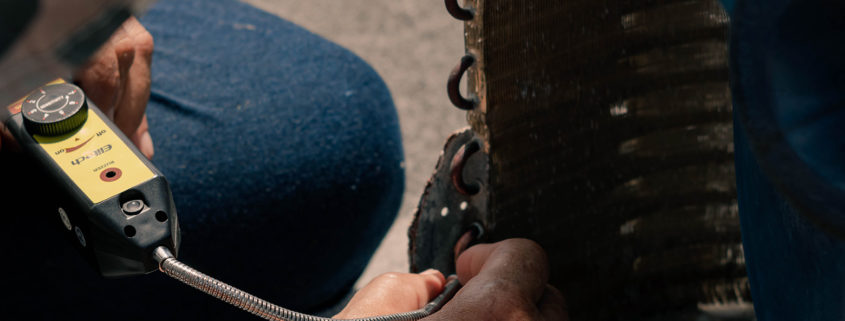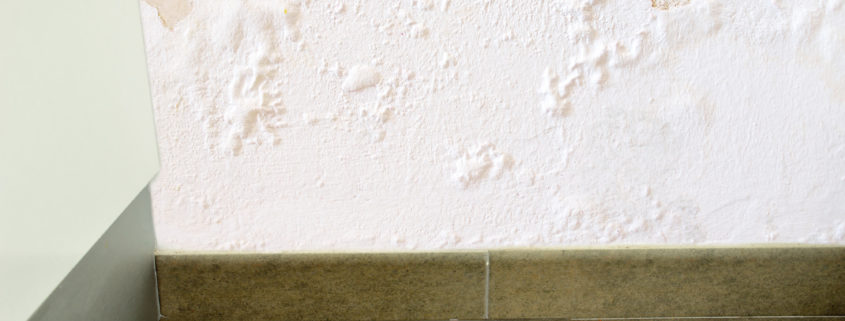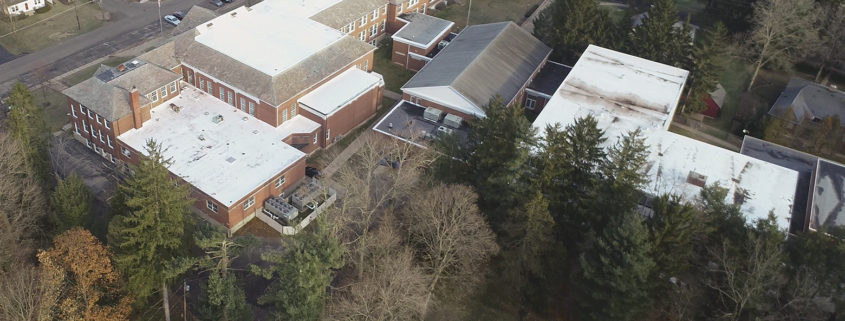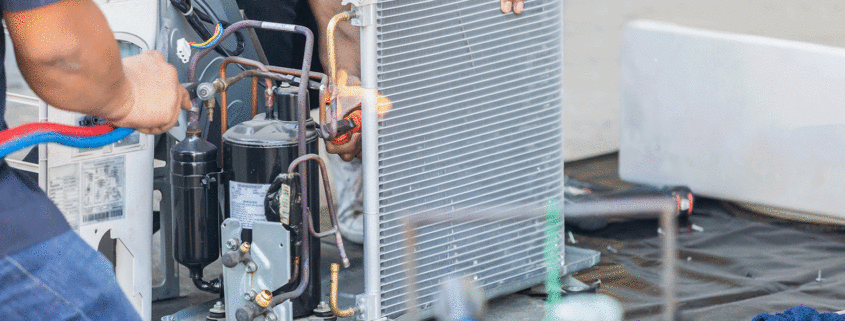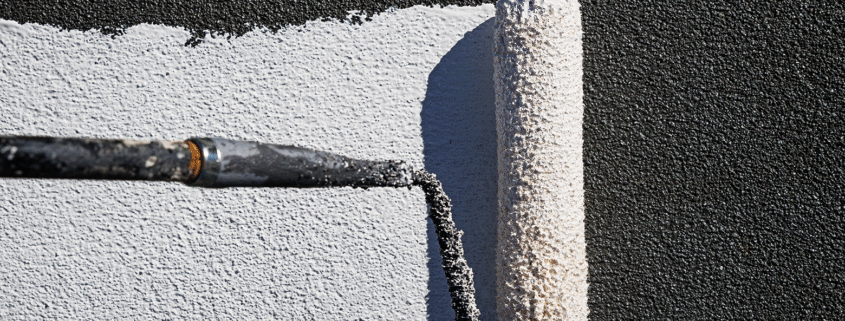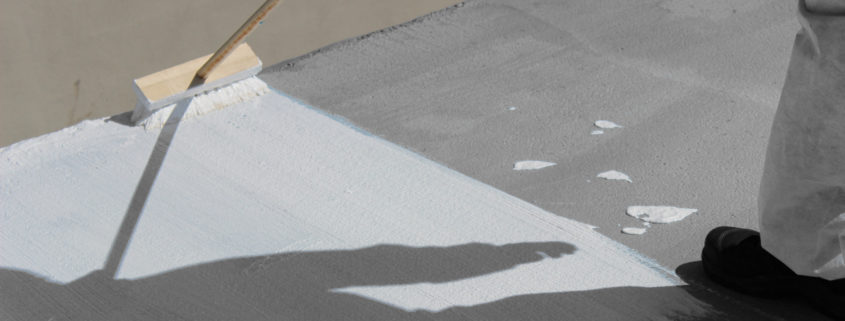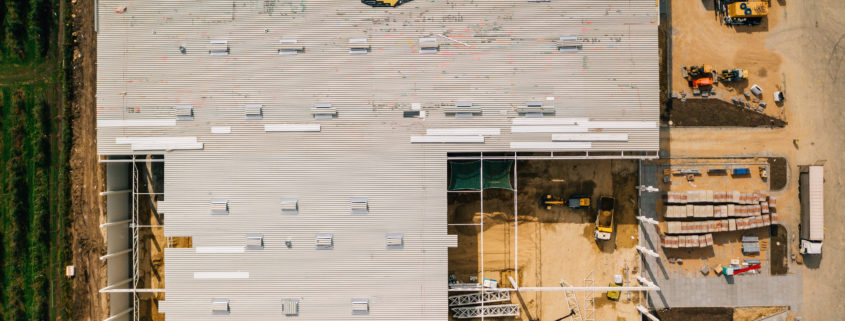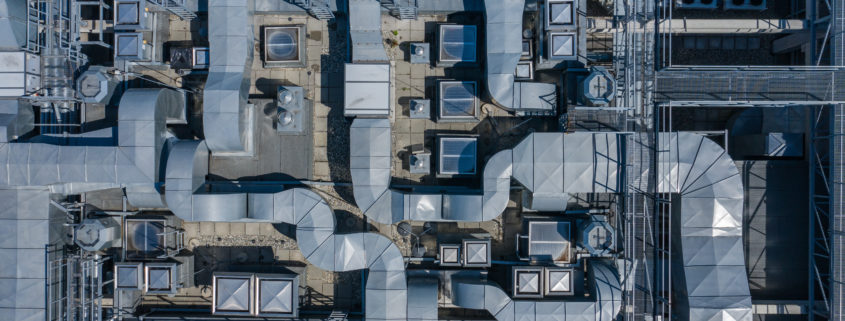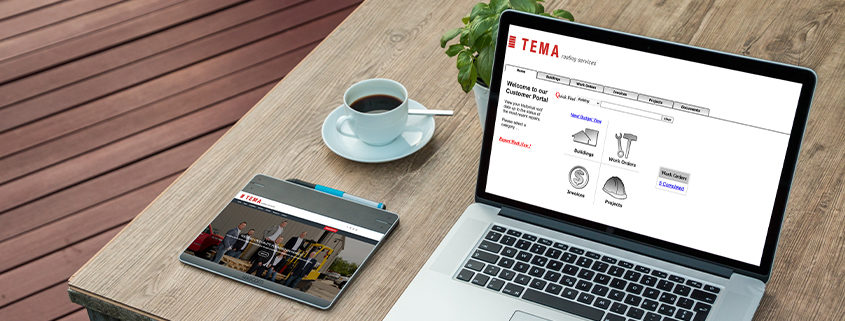HVAC systems (heating, ventilation, and air conditioning systems) are used in homes and businesses to keep the interior environment comfortable and healthy. HVAC systems can be very complex, but some common components underlie the operation of these systems. So, how does a commercial HVAC system work? Let’s take a look.
Condensation is everywhere you look, yet people never seem to take notice. That’s because most condensation forms in areas that are quickly fixed—places like your car windshield or bathroom mirror.
However, condensation also forms in places susceptible to water damage. Just because you paid the big bucks for an excellent industrial roof, doesn’t mean that the roof is free from future problems.
Even the best-designed roofs can suffer from condensation issues. To help your roof materials stay in tip-top shape, let’s break down how to prevent condensation.
School buildings, like most other commercial roofing systems, need to be roofed reliably at low cost and with energy efficiency in mind. School buildings are also unique in the fact that funding sources are different and most repairs and roofing projects need to be done without disruption day to day activities. Taking those factors into consideration, let’s take a look at the popular choices for roof systems for school buildings.
Replacing your entire HVAC system is quite a daunting task. Not only financially, but from the aspect of having the business stalled or shut down completely during the process. A commercial HVAC system generally lasts 10-15 years before signs come that it’s time to replace or repair the system in a way that helps extend the life of the whole system. In the interest of employee comfort and longevity of the property, it’s best to maintain your commercial HVAC system regularly with visits from a professional HVAC services company.
Reflective roofing, like a white t-shirt on a hot summer day, reflects the sun’s UV rays and sends the heat off of a building. It has been known for quite some time that the reflective qualities of the lighter colored commercial roofing materials help decrease the burden of the HVAC system and insulation. This means they’re keeping the excess heat and all of the damages that come along with it off of the building envelope and keeping the energy costs low.
Building owners will have a leg up on the preventative maintenance of their existing roof and have the peace of mind that their efforts are not going to waste when they begin a commercial roofing maintenance program. The roofing maintenance program is also referred to as a “roof asset management program”. These programs will aggregate your roof inspections, roof repairs, roof replacements and any other work done by the roofing contractor and roofing company together.
Using this information, you and your commercial roofing contractor will come up with a long term preventative maintenance program that will last for the life of your roof. Regular maintenance is a breeze when your roofing services are planned out, and here are 5 reasons why you need a commercial roofing maintenance program.
Does your property need a new commercial roof? Are you actively looking for quotes for a new commercial roof and does it seem to be realistic for you? As you may expect, commercial roof replacement costs vary widely depending upon the system and how it will be used to replace the current roof. It may be advantageous to see if a commercial roof coating is a good alternative to replacing the roof altogether.
Pros and Cons for Coatings
Applying roof coatings to the existing roof membrane can eliminate ponding water on your roof and a coating protects the building from UV rays, resulting in energy savings. There are many types of roof coatings available for prolonging your existing roof’s life including silicone roof coating, acrylic roof coatings, elastomeric coatings to cover the roof surface and preserve it even if the multiple year warranty has run out.
Business Benefits
Commercial roof coatings are essentially designed to be adhered via spray or roll on to an existing roof surface. There are no seams in the application of a roof coating, so it makes the existing roof impervious to leaks due to the structure of the coating. It also doesn’t have any special applications around the HVAC system equipment or other pipes, so it naturally deflects water away from the roof’s surface. These applied elastomeric and polymer surfaces can potentially extend the life of your commercial roof for 5 or more years after the warranty period. Elastomeric roof coatings can literally save the day and your roof!
Roofs Ready For Coatings
With the “BUR” or Built Up Roofs, their top level of flat roof coating is reflective of the sun’s rays, and depending upon the amount of ponding and damage overall, it will benefit from cleaning and application of roof coating. On a metal roof, areas between the insulation and decking being coated can be a lot less money in the long run than replacing large sections of a metal roof. The top layer of modified bitumen roofing is used in flat or low slope roofs and can be coated to protect the asphalt underneath. All of the single-ply roofing systems — TPO, EPDM and PVC can be enhanced with a coating to repair puncture damage and stave off the need to replace the entire system.
When You’ll Need A Coating
Perhaps you’re trying to stop a piece of the roofing that you’ve recently discovered leaking after a big storm. Depending on the amount of damage that has already occurred, a commercial roof coating or recoat might be the solution you need. Rather than a complete new roof replacement, you can still get a great deal of use out of the existing roof with a coating that will fill in the gaps or puncture marks, but you’ll need an inspection by a professional roofing contractor like TEMA before making that final decision.
Which Coating Is Best?
Of the many commercial roofing coatings out on the market, there are certain types that perform better on certain roofs. Professional roofing contractors like TEMA Roofing can make that determination. Today’s roof coating market includes: Silicone, Urethane, Acrylic and BUTYL. Each fulfill the need to coat the commercial roof and save the existing roof with slight variations.
Silicone works well because it’s usually applied white, known as a cool roof which reflects the sun’s rays back into the atmosphere, saving on energy costs due to its reflectivity and it doesn’t expand and contract much with the weather changes after a coating application. Acrylic roof coating has similar properties with expansion and contraction during climate changes but you can apply custom coloring to an acrylic coating and still remain energy efficient. Urethane roofing is usually reserved for high foot traffic roofs due to its high tensile strength and resistance to abrasion. A popular application of this is the spray polyurethane foam or “SPF” coating. Finally, BUTYL elastomeric rubber roof coating is known for its strength and durability but it’s not to be used in low VOC states because it’s not the most environmentally friendly.
Call TEMA Roofing!
The people at TEMA Roofing Services have experience with all types of these high performance commercial roof coating systems, from installation to inspection, service and repair. For the life of your commercial building, TEMA is committed to being partners with you on all of your roofing needs. It’s difficult for a commercial property owner to decide on all the above factors and roofing materials without professional guidance.
With all the types of coatings out there, the best way to choose the ultimate roofing solution for your precise needs is by consulting a seasoned roofing contractor. At TEMA Roofing we play the long game on commercial roofing and will be there for you to help guide you through the process in choosing the right coating for your property. Please call us today!
When shopping the market for a new commercial roof, it’s important to keep track of the overall health of your building. Each commercial roof has its advantages and disadvantages, and with the amount of options available out on the market, making a decision can be pretty difficult. There are built up roofing, single ply roofing membranes, metal roofing, pitched or flat roofs and a variety of coatings. It all depends upon the commercial building you have and the best option available for you, the typical climate of the area where your building is, longevity of the roof choice and obviously the impact on energy efficiency. Read more
Having a safe and functional commercial air conditioning system is necessary for your employees and clients. A commercial HVAC (heating, ventilation and air conditioning) project is a major undertaking, and they entail high upfront costs. Given the number of variables that affect the price, your costs could be much higher or lower depending on your property’s needs, whether it’s a recreational building or an office building and if that is smaller or larger also plays a role, it’s much different than a residential HVAC system.
Far too often, property managers and facility managers inherit a gigantic list of problems associated with their roof, due to run-until-failure management style. With proactive, planned life cycle roof system management, it is possible to eliminate excessive roof system capital expenditures over the total life of the roof. Depending on the size of the asset portfolio, a programmatic roof management plan could save you lots of money. Roof maintenance can be proactively planned and cost-effective with a roof asset management program, saving building owners time and money over the service life of their roof.
About Us
Focused on Quality. Founded on Family.
TEMA Roofing Services is a family owned company, spanning three generations and a 50 year history. We offer commercial & industrial services for roofs of all types.

Recent Blogs & Press
Our Location
TEMA Roofing Services
1596 Motor Inn Drive
Youngstown, Ohio 44420
Phone:
(330) 272-0988
Email:
[email protected]

